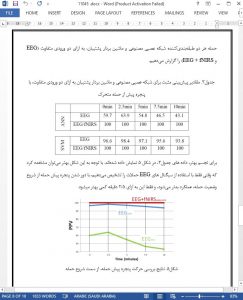Abstract
This paper presents preliminary results on epileptic seizure detection. Combination of functional Near Infrared Spectroscopy (fNIRS) and Electroencephalogram (EEG) recordings shows enhanced performance compare to EEG recordings alone. Moreover, some results concerning the anticipation at which a seizure can be detected are also presented.
I. INTRODUCTION
Epilepsy is one of the top three most common neurological disorders; it is just below strokes and Alzheimer disease [1]. It is estimated that 65 million people around the world suffer from epilepsy, which represents approximately 1% of the global population [2]. On average, 60 new cases of epilepsy 100,000 people emerge every year [2]–[4].
V. CONCLUSIONS AND FUTURE WORK
Even though results from a case-study are not conclusive, Table 2 suggests that adding fNIRS features to an EEG-based detector will considerably improve its performance. Furthermore, from Table 3 and Fig. 5 we confirmed that information contained within fNIRS can help to detect seizures much earlier. Given these promising results, our future work will be to try the same approach with others classifiers on a larger sample. We will also focus on extracting new and better classification features out of the fNIRS signals and combine them with features extracted from EEG recordings. One limitation of our work is the lack of implementation of a feature selection algorithm, although it may not be needed, given the promising results using only the amplitude of signals as features. The choice of optimal parameters in our machine learning approaches, such as SVM kernel type and its associated parameters, number of neurons in the ANN hidden layer as well as a feature selection process will be tackled in future work.











